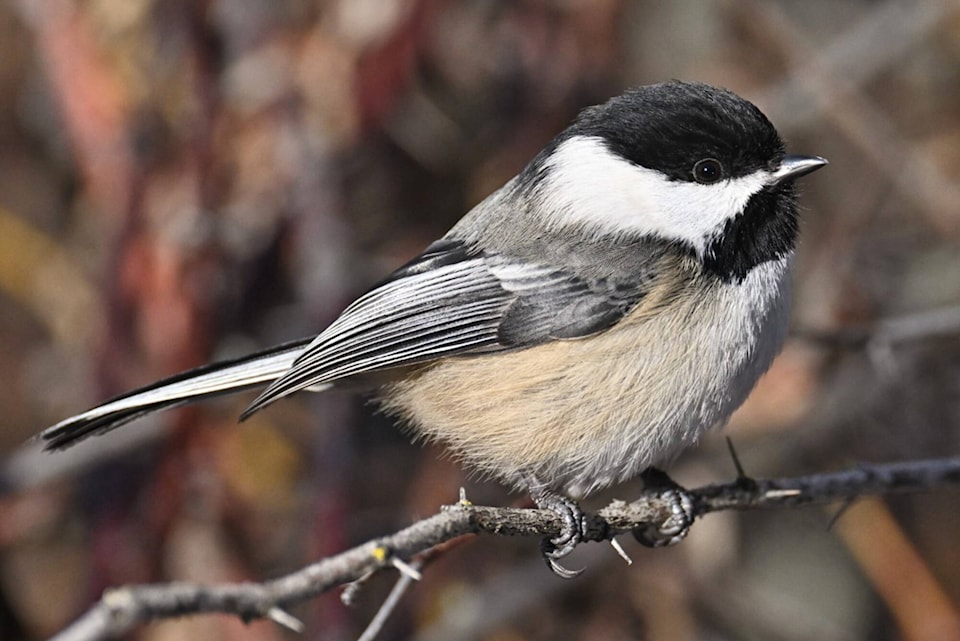By John G. Woods
Special to the Observer
A few days ago, while I walked the along the Foreshore Trail, a small band of black-capped chickadees intercepted me for a close inspection.
True to their inquisitive nature, when I stopped the chickadees zoomed closer, perhaps remembering other hikers with a sunflower seed to spare.
The inspection worked both ways as I marvelled at the complex shades of white, grey, black and brown that make up a chickadee’s plumage. Close views of wildlife are one of the joys of this trail where carefully managed hiker etiquette has produced generations of birds that will tolerate humans gently passing by at close range.
That particular day, I saw multiple bands of chickadees and by trail’s end, had counted at least 24 individuals. Most travelled in groups of four or five. As I encountered each group, I froze in my tracks and readied my camera.
I remember one chickadee that was particularly bold as it tried to land on my slippery camera lens. In retrospect, I wondered if it saw a reflection of itself in the glass at the end of the lens. Another chickadee landed on a hawthorn branch at arm’s length away and gave me a good looking over.
I can’t tell you whether this was a male or female bird because to human eyes, male and female chickadees look the same. But to another chickadee, the sex of this bird was likely instantly visible because chickadees (and all birds) have a visual super-power not shared by humans — vision that includes the ability to see into the ultraviolet range of light energy.
We see colours because of three types of specialized cone cells in our retina. These cones are most sensitive to blue, green and red wavelengths of light. Our brain interprets them to produce all the colours we see in a rainbow as well as black (the absence of colour) and as white (all colours combined).
Birds have four types of colour receptors in their retinas: blue, green, red and ultraviolet. This gives them an amazing range of colour perception that we can only dream about. The plumage of male chickadees has considerable reflection of ultraviolet light from areas that we perceive of as pure white. When combined with behavioural, song, and call differences, the sex of my inspector chickadee would have been instantly recognizable by other members of its travelling band.
I wonder what a rainbow looks like to a chickadee?
newsroom@saobserver.net
Like us on Facebook and follow us on Twitter
Sign up for our newsletter to get Salmon Arm stories in your inbox every morning.
